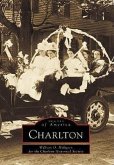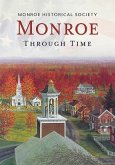By the mid-nineteenth century 80 percent of Charlton land was used for agricultural purposes. The railroad arrived in 1838 giving the farmers new markets. The dairy industry, from which Charlton received it moniker "cow town", expanded up to the First World War, then began a long decline, and has now vanished. As the twentieth century drew closer, small shops along the many waterways, began to be absorbed by larger mills which are now gone. Charlton's excellent school system and its geographic location with its proximity to Worcester, Springfield, Hartford and Boston resulted in a dramatic population increase in the latter part of the 20th century. In 1920 the population was 1,995, by 1970 it had slowly increased to 4,654, then it was "discovered" and today it is over 13,000. Today, taking a leisurely walk through the woodlands of Charlton will result in viewing stonewalls in every direction, evidence of once open fields cleared of stones by hard working farmers of a bygone time.
Hinweis: Dieser Artikel kann nur an eine deutsche Lieferadresse ausgeliefert werden.
Hinweis: Dieser Artikel kann nur an eine deutsche Lieferadresse ausgeliefert werden.








